This story is a personal opinion piece by our contributing writer, inspired by the Delhi riots. It was first published in AltMedia News on the 29th February 2020.
There is a stark, almost eerie, sense of déjà vu between the sequence of events leading to then US president Bill Clinton’s 2000 visit to India and the recently concluded President Trump’s visit to India. The 2000 Clinton visit came on the back of a limited conflict India faced with Pakistan in Kargil theatre escalating the Kashmir situation in 1999 & in the US President Clinton had just survived historic impeachment proceedings as a result of the Monica Lewinsky affair.
The 2020 India Visit of President Trump promoted as ‘Namaste Trump’ took place after an eventful 2019 which saw severe escalation of hostilities between India and Pakistan, after the Pulwama massacre and the subsequent Balakot operation by India. India also revoked Article 370 in Jammu & Kashmir, which was previously thought of as un-touchable. Incidentally back in the US, Trump also survived an impeachment proceeding on account of allegedly withholding aid to Ukraine in favour of quid-pro-quo political benefits to counter the noise around foreign interference in electioneering.
Other events that are glaringly common to both these high-profile visits separated by 20 years in history include the unleashing of communal violence during both these US presidential trips to India. Both times, interestingly, the Indian government was headed by a BJP lead alliance, although the two US presidents in question belong to different parties and ideologies. The other striking similarity between 2000 and 2020 is that there is an upcoming general election in US this year. In 2000 as well there was a presidential election in the US in the same year after Clinton visited India. It does baffle minds as to whether these similarities are pure co-incidental, a fait-accompli, or magically woven to transcend time!
 After a very long spell of frosty political & diplomatic relations with the power corridors in Washington during the Cold-War era of Nixon and Carter, Democrat President Bill Clinton’s visit to India in 2000, the first by a US President for more than 20 years, was in many ways a re-defining moment for the Indo-US relationship; however the trip began chaotically, with the massacre of 40 unarmed minority Sikhs, shot at point blank range, in a village, Chattisinghpora, 40kms south of summer capital of Indian state of Jammu & Kashmir, Srinagar. The incident grabbed world media headlines at the time. The timing of this sectarian & communal violence on the eve of Bill Clinton’s five-day tour of India: amid western media glare, was unlikely to have been coincidental. President Clinton described the attack as a “horrible development”.
After a very long spell of frosty political & diplomatic relations with the power corridors in Washington during the Cold-War era of Nixon and Carter, Democrat President Bill Clinton’s visit to India in 2000, the first by a US President for more than 20 years, was in many ways a re-defining moment for the Indo-US relationship; however the trip began chaotically, with the massacre of 40 unarmed minority Sikhs, shot at point blank range, in a village, Chattisinghpora, 40kms south of summer capital of Indian state of Jammu & Kashmir, Srinagar. The incident grabbed world media headlines at the time. The timing of this sectarian & communal violence on the eve of Bill Clinton’s five-day tour of India: amid western media glare, was unlikely to have been coincidental. President Clinton described the attack as a “horrible development”.
Fast-forward this to Feb 2020, and a near repeat of the same cycle of communal violence was unleashed in the capital of India, Delhi, with armed mobs carrying out arson, murder and carnage. The violence lasted the duration of President Trump’s India visit and yet again it is unlikely that the timing of the violence was purely co-incidental. Trump’s state visit to India also came at what some would argue is a difficult time for PM Modi. His party recently lost power in a number of states like Rajasthan, MP & more recently Delhi. Anti-government protests against the controversial citizenship law CAA have been the centre of the newsrooms for some months now. India’s decision to revoke Article 370 from Kashmir, drew varying reactions from world media & international community last year, including members of the U.S. Congress who were concerned about the curbs on internet and imprisonment of some political workers.
But Trump’s focus for this trip was clearly on enhancing the Indo-US trade ties, improve defence sales & to build upon the recent ‘Howdy-Modi’ event in the US to appeal to the influential Indian diaspora back in the US, which he believes could be a factor in the upcoming presidential elections.
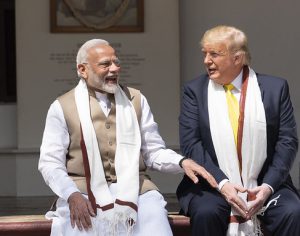 The visit was also symbolic of growing Indo-US proximity with the announcement of further strengthening of the QUAD relationship between India, US, Japan, and Australia to counter the ever-growing Chinese threat. The US administration also signalled that US will continue to develop the relations with India despite the socio-cultural reforms in India and the perceived pressures within the society as a result of the churning. And lastly, President Trump refrained from making any controversial statements and also ensuring the exclusivity of attention by not clubbing his visit with a visit to any other neighbouring country like Pakistan or Bangladesh – unlike the Clinton trip.
The visit was also symbolic of growing Indo-US proximity with the announcement of further strengthening of the QUAD relationship between India, US, Japan, and Australia to counter the ever-growing Chinese threat. The US administration also signalled that US will continue to develop the relations with India despite the socio-cultural reforms in India and the perceived pressures within the society as a result of the churning. And lastly, President Trump refrained from making any controversial statements and also ensuring the exclusivity of attention by not clubbing his visit with a visit to any other neighbouring country like Pakistan or Bangladesh – unlike the Clinton trip.
Further critical analysis of the geo-politics of the region & scratching the surface unravels the world of complex web of forces at play within deep states and the manifestation of these interplays on the ground. It is interesting to note that Pakistan has been under tremendous pressure both domestically and also from the FATF & IMF to do more before it can be removed from the ‘grey-list’ and provided substantial funding for domestic reforms.
At the same time Pakistan PM Imran Khan has used all forums available around the world to try and call out India for the rise in intolerance towards the Muslims specifically in reference to Kashmir, under the Modi led regime. In recent reports emanating from some Pakistani publications and left-leaning outlets, some analysts have attempted to draw a parallel between the CAA legislation in India & the ban for travel to US from some Muslim majority countries. The allegation is that both the policies are anti-Muslim & Islamophobic in character, a term increasingly being used to target any critique of the Islamic fundamentalism.
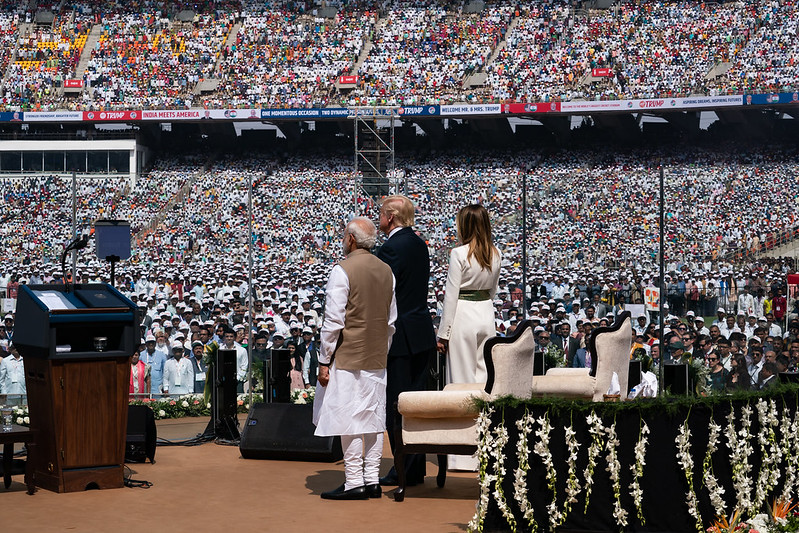 However, both the US and India have categorically emphasised in multiple world forums that the primary reason for such legislation and policies is to counter the rising threat of Islamic fundamentalism and to provide a safe harbour for the oppressed minorities impacted. It is important to note that for years since 1947 Hindu, Christian, Sikh, and other minorities have faced relentless persecution in Pakistan and the state has also abetted by allowing controversial blasphemy laws to exist which multiply the threat to minority communities. Pakistan extended this experiment to the valley of Kashmir in 1990s by encouraging and abetting an armed religious Jihad in an attempt to gain control of the Muslim majority territory, by inciting the communities on the basis of their religious identity, which led to the ethnic removal of around 500,000 minority Kashmiri Hindus (Pandits) from the valley. The pandit community still await justice and safe return to their centuries old abode in Kashmir.
However, both the US and India have categorically emphasised in multiple world forums that the primary reason for such legislation and policies is to counter the rising threat of Islamic fundamentalism and to provide a safe harbour for the oppressed minorities impacted. It is important to note that for years since 1947 Hindu, Christian, Sikh, and other minorities have faced relentless persecution in Pakistan and the state has also abetted by allowing controversial blasphemy laws to exist which multiply the threat to minority communities. Pakistan extended this experiment to the valley of Kashmir in 1990s by encouraging and abetting an armed religious Jihad in an attempt to gain control of the Muslim majority territory, by inciting the communities on the basis of their religious identity, which led to the ethnic removal of around 500,000 minority Kashmiri Hindus (Pandits) from the valley. The pandit community still await justice and safe return to their centuries old abode in Kashmir.
After the revocation of Article 370 by the Indian Government in 2019, Imran Khan predicted a blood-bath in Kashmir and also said this was the beginning and once the genie is out of the bottle, 200 million Muslims of India will be targeted. It was as if the magic sphere he held in his hand provided the insight and made the future predictions for him. In any world conference this speech should have been banned and castigated as ‘Hate Speech’, but Imran Khan got away with it.
The violence in Delhi during President Trump’s recent visit has almost an indelible rubber-stamp of a foreign funded and contrived campaign to encourage instability, create negative optics and polarise the communities. Over the last few months a lot of money and resource has been provided in keeping the anti-CAA agitation alive at Shaheen Bagh in Delhi (which has found a new term “Biryani Politics” becoming the talk of the Twitterati, i.e. to keep the agitation alive by feeding protestors with the famous chicken and veg biryanis) and it culminated into instigating mobs to carry out violence across the north belt of the otherwise peaceful city coinciding with the US presidential visit.
The sheer optics of unleashing this violence during a high-profile presidential visit and then spinning the narrative of oppression and violence on Muslims becomes an easy sell both as a diplomatic propaganda and also in the cyber-warfare.
It is intriguing to note that the number of people who have died or have been injured in the recent Delhi violence are more or less equally from both the communities. No doubt there has been a communal angle to the violence in Delhi but to frame it as purely anti-Muslim is inappropriate and plainly mis-representative. People across all walks of life have lost their lives, many have been seriously injured & there has been significant damage to property & businesses, but more importantly for the strategists of this strife, it has allowed the projected optics to steal the headlines and that seems to be the real purpose behind this recent uprising.
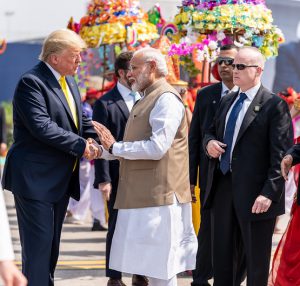 Create circumstances where communities are pitched against each other, cause mayhem and then project this on a Global stage as the oppressive strategies of the current Indian government. Right now, the priority for the administration must be to restore law and order, provide confidence to the communities that they are safe and can get on with daily life un-inhibited; identify and deal with the perpetrators of the violence firmly, identify the forces behind this propaganda and above all strengthen the legal, safety and intelligence network to counter, and effectively plug and neutralise, the exponential rise in false-flag campaigns aimed to malign the diverse and democratic credentials of India.
Create circumstances where communities are pitched against each other, cause mayhem and then project this on a Global stage as the oppressive strategies of the current Indian government. Right now, the priority for the administration must be to restore law and order, provide confidence to the communities that they are safe and can get on with daily life un-inhibited; identify and deal with the perpetrators of the violence firmly, identify the forces behind this propaganda and above all strengthen the legal, safety and intelligence network to counter, and effectively plug and neutralise, the exponential rise in false-flag campaigns aimed to malign the diverse and democratic credentials of India.
Pakistan knows well that with its weak economic outlook, diminished military capabilities and lack of funding and support from world community, barring China who are currently engulfed with the Corona Virus crisis, they don’t have the option to take India head-on either militarily or diplomatically. Therefore the sine qua non of their deep-state is to keep the pot boiling, to unleash a campaign of hate, mis-information, and propaganda warfare with an aim to cripple India’s growth story and paralyse the global discourse by misleading, so the focus remains on the rise in intolerance against Muslims in India.
No-doubt the policy makers in south-block in Delhi and the intelligentsia/strategists in the government are well aware of these nefarious designs but the Indian diplomacy and political machinery needs to be ever more nimble and agile to deal with the changing 360 degree paradigms of the propaganda machinery they are up against; which is well funded, highly motivated, and has an expansive outreach in the Indian heartland as well.
India’s strength and its fountain-head remains its cultural, spiritual, intellectual, and linguistic diversity, its fundamental belief in democratic institutions and its vibrant global talent pool. The foundations of Indian democracy remain strong and vibrant, and it is for the successive Indian governments to build on the growth story, to keep pace with the changing world order, to re-shape its policies to keep them relevant to the rising geo-political challenges, so that India can realise its potential and play a defining role in the changing world order.

Vinod Tikoo
Vinod Tikoo is a Digital IT leader and a community activist based in London. A Kashmiri Hindu, born and brought up in Kashmir, Vinod represents the Jammu and Kashmir Study Centre, UK. The Centre is an advocacy and think tank on J&K. Vinod is also associated with the Kashmiri Pandits Cultural Society, UK; a leading voice of Kashmiri Pandits in the UK.
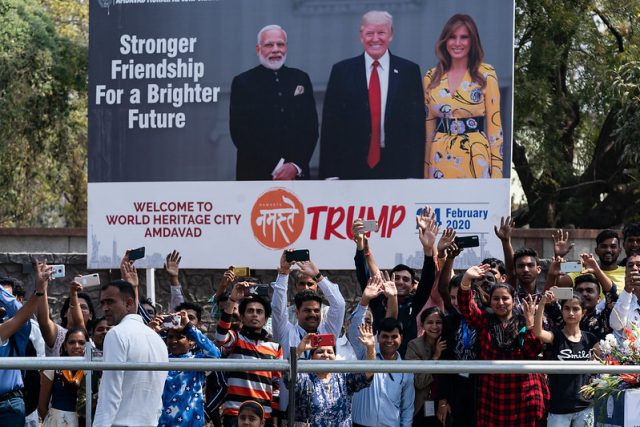
![Powerful Pride documentary Legendary Children [All Of Them Queer] streaming very soon](https://globalindianstories.org/wp-content/uploads/2025/06/Legendary-streaming-release-featured-238x178.jpg)

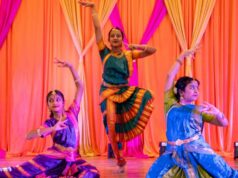

![Powerful Pride documentary Legendary Children [All Of Them Queer] streaming very soon](https://globalindianstories.org/wp-content/uploads/2025/06/Legendary-streaming-release-featured-100x75.jpg)

